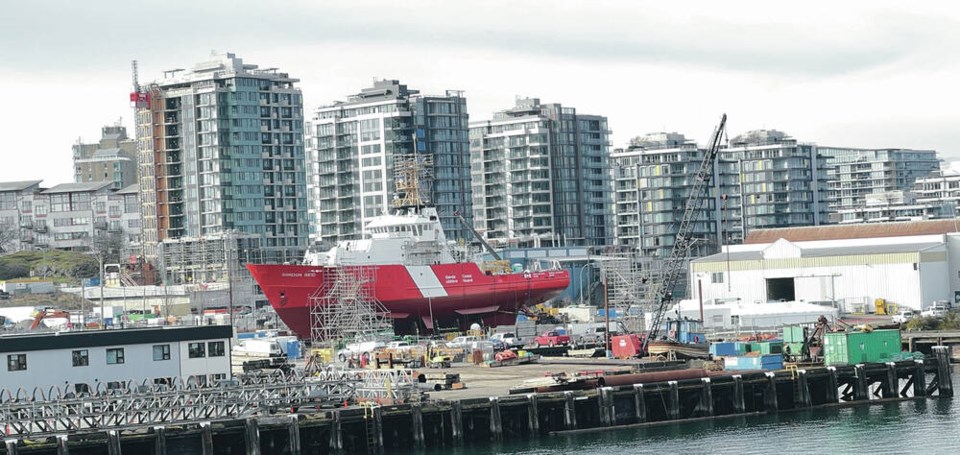A commentary by a space planner and interior designer.
There has been much talk about dandifying Victoria. Here are some facts that put the need for more housing into perspective.
Because I am a James Bay resident, the numbers I present are illustrative of James Bay, but can inform the other 12 Victoria communities as well.
City planners have projected that by 2041, the population will total 111,300 people. The 2023 population listed on the City of Victoria website is 94,000, so Victoria will need to accommodate 17,300 new residents in the next 18 years.
That comes to 961 new people to be accommodated per year.
Victoria has 13 communities, and each one has to contribute to accommodating population growth. It cannot all be absorbed in downtown, James Bay and Vic West.
So, dividing 961 by the 13 communities, each community has to welcome 74 new people per year.
A figure of 1.5 people per accommodation unit is generally accepted as the norm. Dividing 74 new people by 1.5 shows that each community has to add 49 new units to its existing housing stock each year.
Let’s look at what the mayor and councillors have been doing.
Developments in James Bay underway in 2021-23: 492 new units.
Currently on the city’s development tracker website are 13 proposals being considered for James Bay in 2023-25: 667 new units
A total of 1,159 units in the five years 2021-25 equals 232 units added per year in James Bay alone. Why, when we should only be adding 49 units per year in James Bay?
In Vic West, the council is approving 1,900 new units at the Roundhouse site. This is overreach.
The developers are rubbing their hands together and saying: “Sorry Victoria, you’ve been discovered.” The developers have become so bold as to assume that anything they propose will be passed by mayor and council. And they are right.
The mayor and council, in their haste to respond to housing needs, are overreacting and approving almost every development proposal put in front of them, against clear opposition from the neighbourhoods.
At public council meetings, I have seen residents pleading, even in tears, that developments be revised before passing, to meet the existing neighbourhood needs.
The concerns of the community are strong and legitimate: Increased traffic on streets with day cares, wind tunnels created, shade cast onto public parks all afternoon, whole city blocks of mature cherry trees being killed to make way (in 2022 alone, 290 trees were destroyed), relocating at-risk folks across from a cannabis sales outlet (Russell Street) and more.
The neighbourhood residents know that the developers have the ear of the mayor and council because of the big money they offer to the city by way of “lifts.”
Developers are trading extra coverage on land, extra height and excessive density for millions of dollars into the city coffers in what the city refers to as a “lifts” or “amenities.” The city pines for this money to shore up its coffers.
But, the current residents say: “Wait a minute, we pay big money collectively to the city in property taxes.”
I give a low estimate that my block pays $1 million per year in property taxes. This money is taken for granted by the city, even though it is what pays all of them at 100 Centennial Square.
This tax base pays for the mayor and councillors to make suitable and sound decisions on your behalf. This tax base pays for the city planning department staff to review the developers’ proposals to ensure that they are adhering to zoning bylaws and planning bylaws.
However, too often, council passes the developers’ plans, which are far beyond the zoning bylaws, against the recommendation of the planning department staff.
Why are taxpayers footing the bill for these staff members, to the tune of $20,889,123 (as listed in the 2022 city annual report) only to be ignored by a council that is not interested in and not understanding all the facts?
As the numbers show, 49 units per year per community are indeed needed. Approving developers’ proposals that overreach the bylaws, are unsuitable to the street and community residents, create tiny living spaces for people with nine-foot by nine-foot living rooms and with no green space for people or pets, is not needed. That is what overreach produces.
There are so many development proposals in front of the mayor and council that they have the opportunity to be selective in what they approve for development.
On behalf of the current city residents, I sincerely wish that they would take it.
>>> To comment on this article, write a letter to the editor: [email protected]



